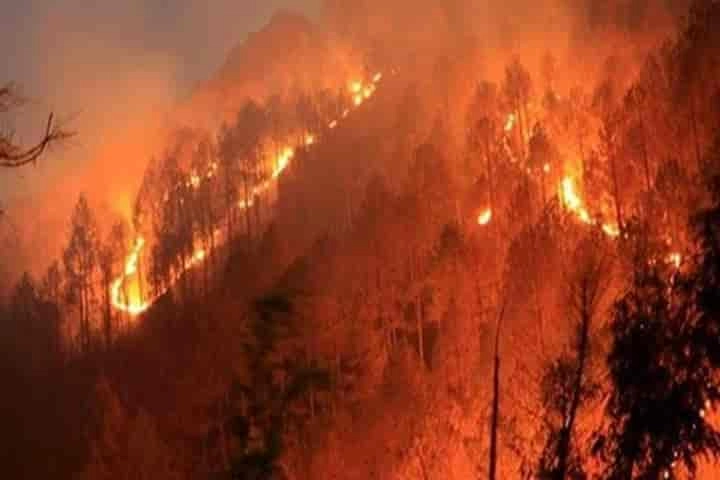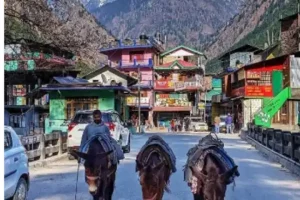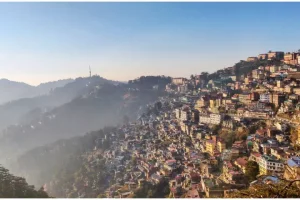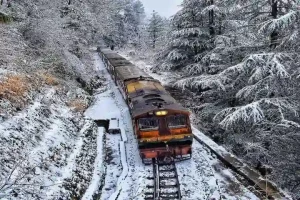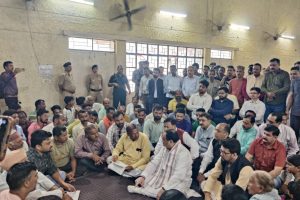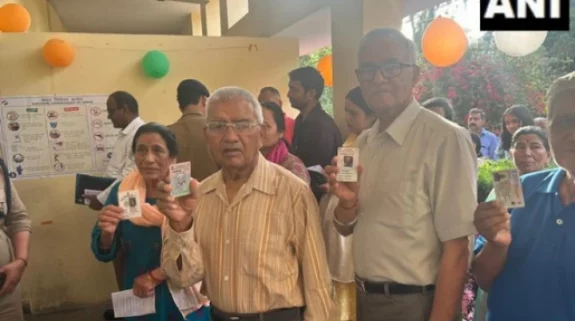Unprecedented heatwave, sweeping the northern plains has left the mountains fiercely impacted and reeling under extreme weather conditions.
The meteorological data clearly demonstrates that India’s hill stations are warming up faster than towns, the big metropolises and nearest foothill downs like Chandigarh, Ambala, Ludhiana and Amritsar, this time in April .
In Shimla – a popular hill destination, the temperature breached the 30.5 degree C mark . The indirect fallout of the heatwave is alarming, as it can trigger raging forest fires, prolonged dry conditions, shrinking of snow cover and melting of glaciers. Together the heatwave forms a perfect storm, threatening farm economy, horticulture, tourism and rural livelihoods.
A drinking water crisis in Shimla has forced rationing. The increased tourist influx at hill destinations like Kullu-Manali, Dalhousie , Dharamshala, Mcleodganj and Shimla has already led to crumbling of the civic infrastructure and spiralling pollution levels.
Heat wave continues in HP, water shortage worsens in Shimla#HimachalPradsesh #ShimlaWaterCrisis#weather#temperature #heatwavehttps://t.co/NVLCM3zFv4 pic.twitter.com/iHW5JwzKKj
— United News of India (@uniindianews) May 29, 2018
For the past 20 days, Shimla has been engulfed in a thick layer of smoke rising from the burning of the forests in the close vicinity and also peripheral hills at Taradevi and Chail forests—some of the best surviving wooded valleys.
This is the State of @swachhbharat
Entire Municipal waste of #Chail City, #HimachalPradesh is collected and burnt openly.
Besides being an #environmental disaster, it can cause #forest Fires too. @PMOIndia @HardeepSPuri @CMOHimachal @SwachhBharatGov @UNEnvironment @EU_ENV pic.twitter.com/dilAeH9nAB
— Nikhil Saraf (@NikhilSaraf14) June 17, 2019
Major General (Rtd) Atul Kaushik, an environmentalist shares his concern over massive forest fires, which have reduced more than 11,000 hectares of the forests to ashes and destroyed the rich biodiversity ,fauna and flora .
“Reasons for the forest fires could be multiple ,or also man-made but fact remains that rising temperature ,heat and dry spell ,have been key factors igniting the flames. We show many habitations threatened by the fires. Army establishments at Kasauli had to swing into action, deploying helicopters to control fire” he informs.
The neighbouring state of Uttarakhand has seen the worst fires in 2020 burning down protected regions and biodiversity hotspots in several hectares of forest land.
Twenty-one heatwave days in Himachal Pradesh , next to 25 in Rajasthan and Madhya Pradesh in April 2022,are being viewed as a worrying sign for the ecologically fragile mountains ,quite unusually bearing the brunt of the climate change.
Veterans recall that Shimla never felt the heat in recent times .It was quite a rare that sweltering heatwave (loo as normally described) could impact Shimla’s summer temperature .In case, it did in the months of June-July, the rains ideally never disappointed to cool the surroundings. But that seems to be history now.
Rivers and water bodies in some of the districts viz Chamba, Kullu ,Shimla ,Mandi and Hamirpur have dried up rendering many drinking water supply schemes defunct .The traditional water sources in Hamirpur has got severely impacted .Average temperature in hill towns viz Kalpa,Palampur,Manali,Chamba,Dalhousie and Dharamshala is reported five to five degree higher than average temperature in April previously ,confirms officials at Shimla weather station.
The heatwave and dry spell could be far reaching in its impact in the snow-bound high altitude belt, which has limited working period and arid conditions, feels Manshi Asher, an environmentalist working with rural communities and climate change victims in the Himalayas.
By now, Himachal Pradesh has reported a loss of Rs 207.15 cr to the agriculture crops and another Rs 230 cr to horticulture .The State Disaster Management Authority report says the figures about losses to the seasonal fruits ,is yet to be assessed .
The apple crop, which happens to be highly dependent on weather, has already got wiped-out in certain vulnerable belts, facing dry heat and unfavourable weather .The conditions have also impacted the cherry crop ,plum and green almonds.
Scenic view which #IncredibleIndia provides…..
Apple Orchard, Batseri Village, #HimachalPradesh #himachal#Sangla Valley #Himalayas @incredibleindia pic.twitter.com/AZLC8XhAAn— Gautam Kashyap (@gkash77) July 21, 2019
“The studies clearly show that some of the traditional apple varieties which had sustained the apple economy for three to four decades are not getting the right kind of climatic conditions .This has hit productivity as well as the production. The aging orchards, thus, are being replaced by high density plantations—only way to adapt to climatic changes, “admits Dr S P Bhardwaj , head of Environmental Sciences at Dr Y S Parmar University of Horticulture and Forestry ,Solan .
Climate change is already showing its impact on the crops, confirm studies done by the University .The excessive heat has a strong impact on the crops that start wilting if they do not get requisite moisture and temperature.
The orchards shifting to the higher elevations in Kinnaur and Lahaul-Spiti is also a reality.Spiti, for example ,known as cold desert area, earlier known for growing cash crops like peas ,have best varieties of the apples .So is case with Kinnaur’s ,where desertification , had never supported the fruits in the past.
Biggest worry, however, in the high altitudes, is shrinking winter snow cover and fast melting of the glaciers –adversely affecting the flow of the perennial river viz Sutlej, Ravi, Beas and Chandra-Bhaga (Chenab) .Himachal Pradesh Council for Science,Technology and Environment study done two years ago ,has proved that there is an overall reduction in the area under seasonal snow cover .
“We have just done another study .The data is under compilation for drawing-up detailed conclusions” confirms a senior Scientist on promise of anonymity.
Extreme weather conditions triggering multi-hazards like cloudbursts, snow avalanches, unusual rise in temperature, GLOF ( Glacier Lake Burst Floods) , flash floods and landslides have become frequent occurrences in the Himalayas.
Kinnaur, for example ,has become the most vulnerable district to extreme weather conditions like landslides and flash floods .The number of lakes in Kinnaur has increased significantly.
“It's high time we make sincere efforts towards saving our environment or we will get pushed to grave and reversal situations” says Anand Sharma , former head of the meteorological department at Dehradun.
Also Read: Braving forest fires of Himachal – the inspiring story of Raveena Chauhan






